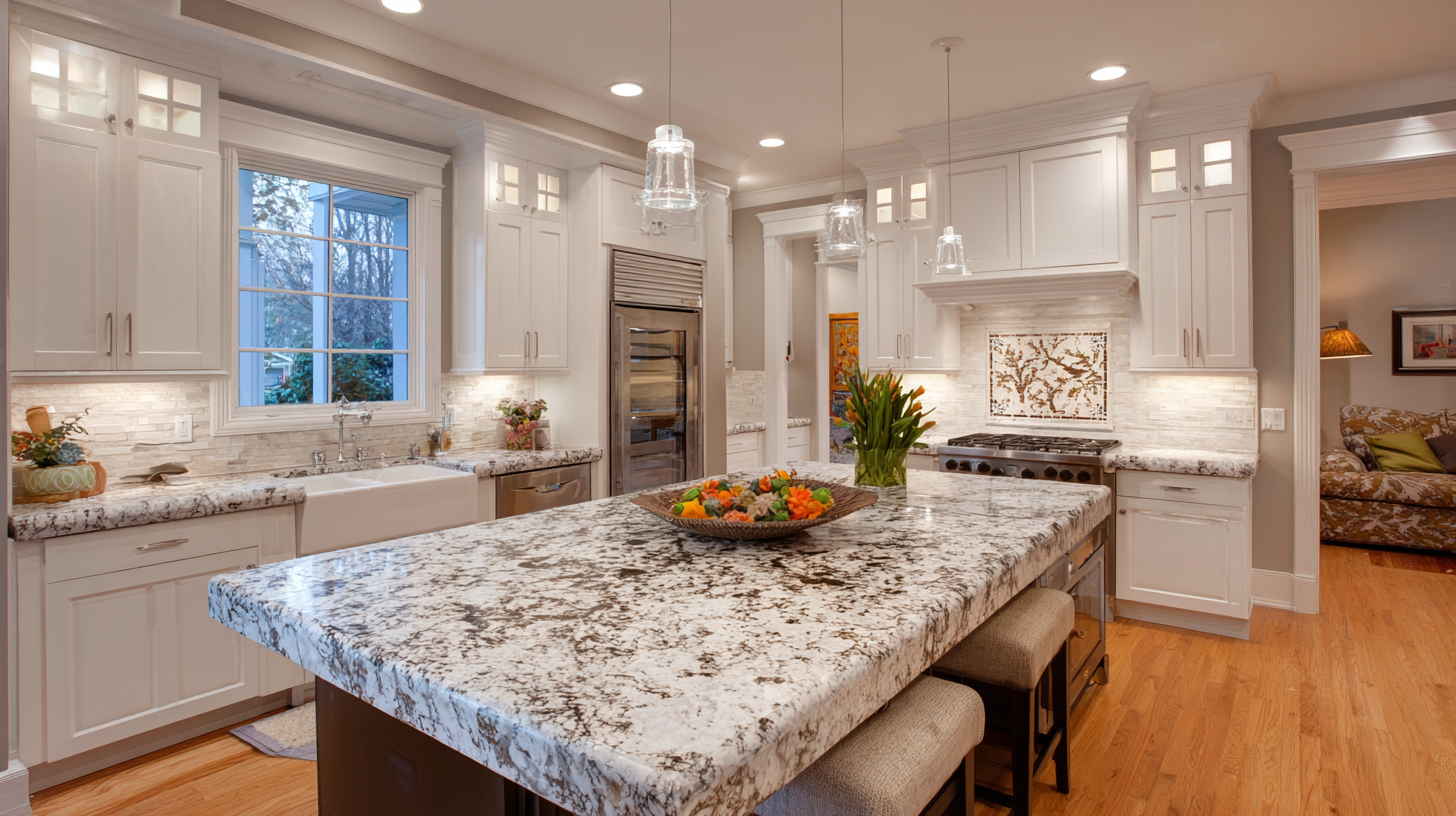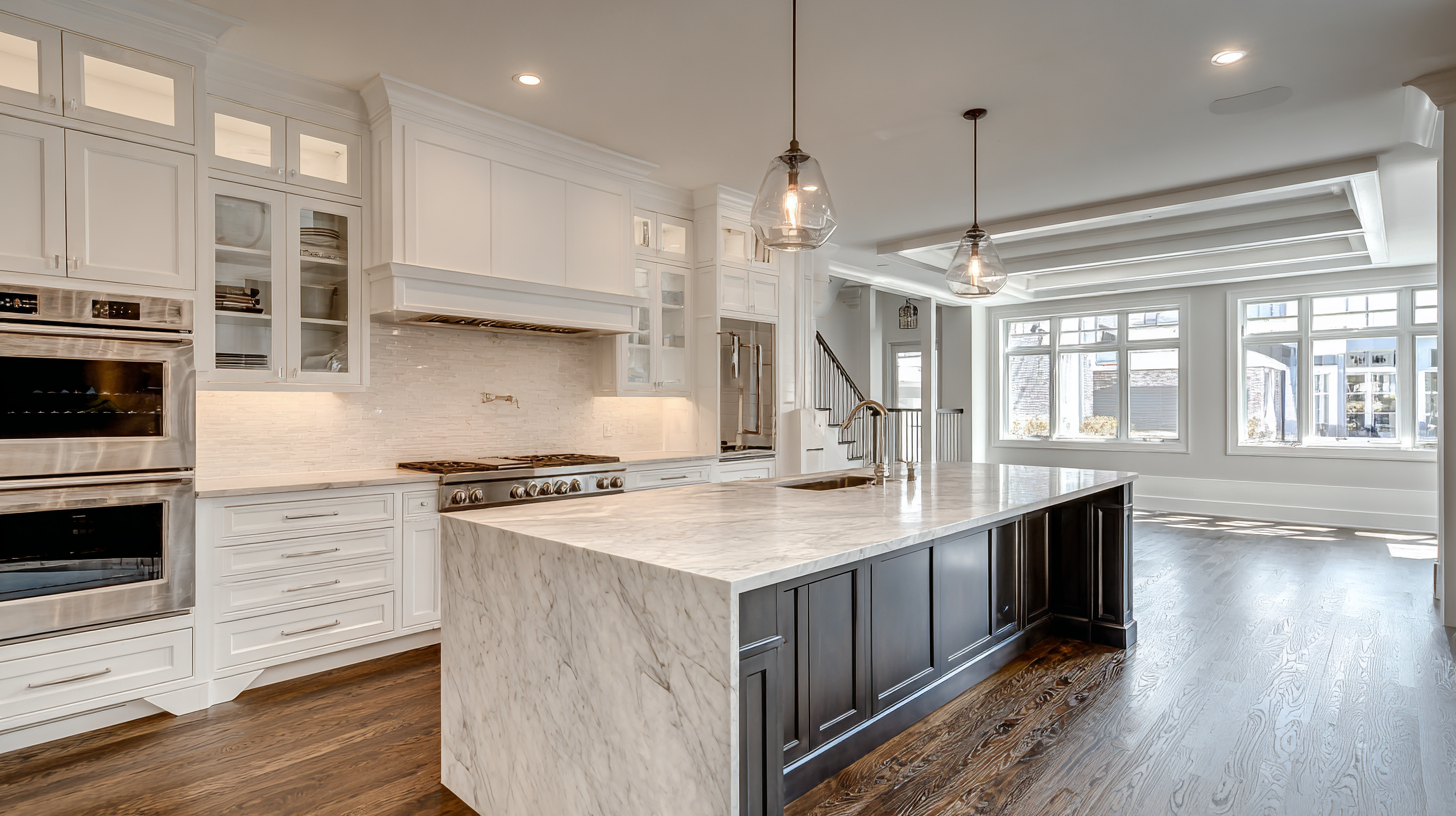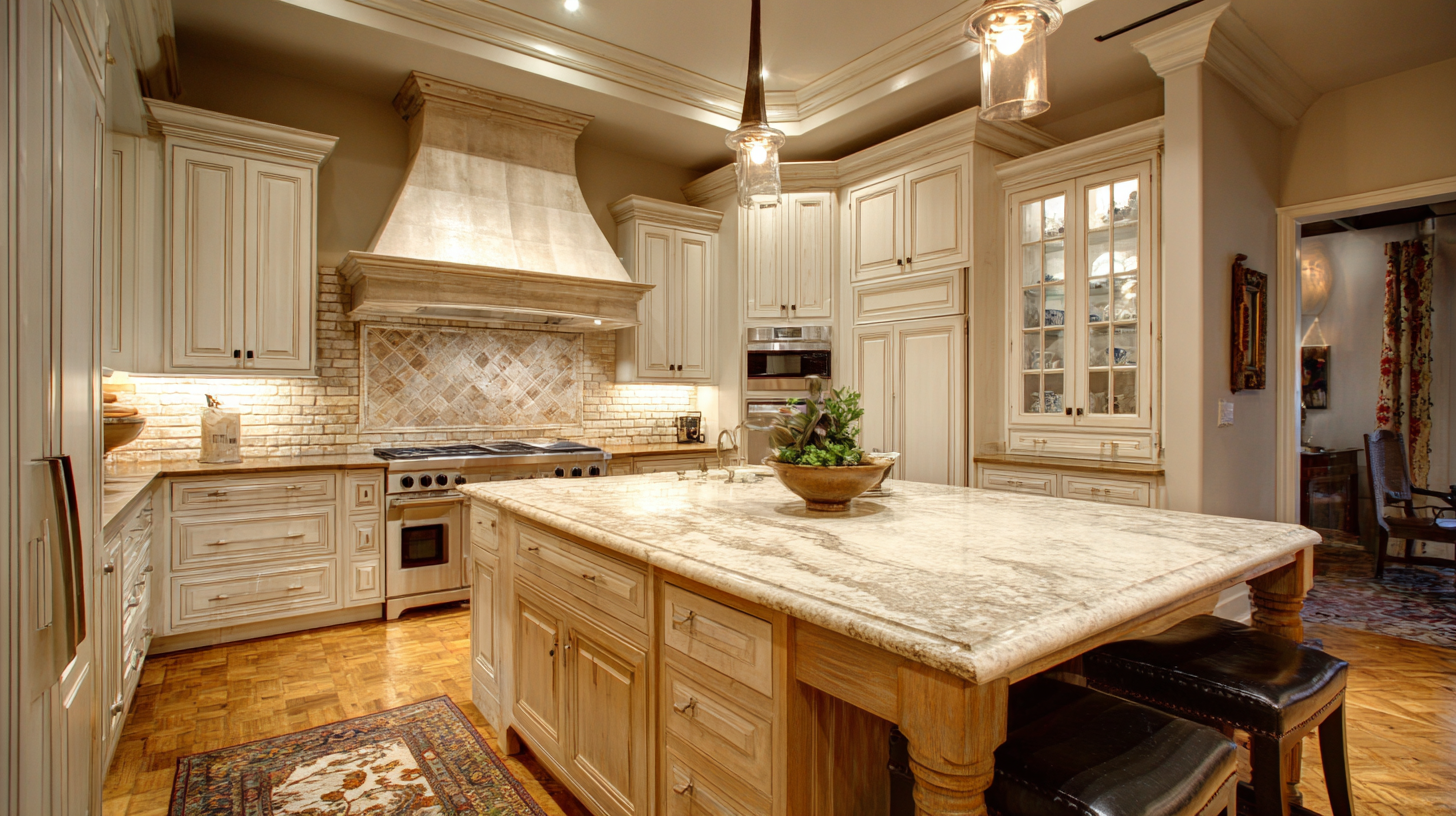Blog
How to Choose the Best Stone Countertop for Your Kitchen ডিজাইন
Choosing the right stone countertop for your kitchen is a critical decision that impacts both aesthetics and functionality. According to the 2023 National Kitchen & Bath Association (NKBA) report, 72% of homeowners prioritize countertop materials when renovating their kitchens, with stone countertops leading the charge due to their durability and timeless appeal. Stone countertops, which include popular options such as granite, marble, and quartz, not only enhance the visual appeal of a kitchen but also add significant value to a home. With a wide range of colors, patterns, and finishes available, selecting the best stone countertop can be overwhelming. This tutorial will guide you through the key factors to consider—including maintenance, style, and cost—ensuring you make an informed choice that perfectly complements your kitchen design.

Understanding Stone Countertop Materials: A Comparison of Granite, Quartz, and Marble
When it comes to selecting the perfect stone countertop for your kitchen design, understanding the differences between granite, quartz, and marble is essential. Granite, a natural stone, boasts a stunning variety of colors and patterns, making each slab unique. Its durability and resistance to scratches and heat are significant advantages, especially in a busy kitchen environment. However, granite requires regular sealing to prevent stains and maintain its appearance over time.
Quartz, on the other hand, is an engineered stone that combines natural quartz crystals with resins and pigments. This material offers a non-porous surface, making it highly resistant to staining and bacterial growth. Available in a wide array of colors and designs, quartz countertops provide a consistent look while minimizing maintenance needs.
Marble, known for its timeless elegance, features stunning veining that can elevate any kitchen's aesthetic. However, it is softer and more porous than granite and quartz, making it susceptible to scratches and stains. Regular sealing is crucial to protect its beauty and prolong its lifespan. Ultimately, the best choice depends on your lifestyle, design preferences, and how much maintenance you are willing to undertake.

Key Factors in Selecting the Right Thickness for Your Kitchen Countertop
When it comes to selecting the perfect stone countertop for your kitchen design, thickness plays a crucial role in both aesthetics and functionality. Typically, stone countertops range from 1 to 3 inches in thickness, and choosing the right dimension can dramatically impact the overall look and feel of your kitchen. Thicker countertops often convey a more substantial and luxurious appearance, while thinner options create a sleek and modern vibe. It’s essential to consider the style of your kitchen; for example, traditional designs may benefit from the added grandeur of a thicker slab, whereas contemporary spaces might look better with a minimalist approach.
In addition to aesthetics, the thickness of your countertop also affects durability and maintenance. Thicker stones are generally more resistant to chipping and cracking, making them a practical choice for busy kitchens. However, lighter, thinner stones can be equally stunning if properly supported, offering an elegant touch without overwhelming the space. It’s important to assess your cooking habits and overall kitchen use to ensure that your chosen thickness will withstand daily wear and tear. Ultimately, weighing both style preferences and functionality will guide you in selecting the ideal stone countertop thickness for your kitchen.
The Impact of Color and Finish: How to Match Stone Countertops with Your Kitchen Design
Choosing the right stone countertop is crucial for achieving a cohesive kitchen design. The color and finish of the stone can dramatically influence the overall aesthetic, so it’s essential to consider how these elements will harmonize with existing décor and color schemes. According to a report by the National Kitchen and Bath Association (NKBA), 42% of homeowners prioritize surface materials that complement their cabinetry, making it clear that the interplay between countertop and cabinetry color is vital.
When selecting a stone countertop, remember that light shades can create a sense of openness and airiness, while darker hues can add warmth and sophistication. For instance, lighter stones like quartz or marble can pair beautifully with dark wood cabinets, offering a striking contrast. In contrast, a polished granite countertop might elevate the look of lighter cabinetry, enhancing brightness without overwhelming the space.
**Tip:** Consider sampling different finishes, such as polished or honed, to see how they impact the light in your kitchen. Polished finishes tend to reflect more light, creating a bright, lively atmosphere, whereas honed finishes offer a matte look that can add depth. Additionally, take the time to evaluate how colors in your kitchen environment interact with your chosen stone under various lighting conditions throughout the day. This step is essential for ensuring a harmonious blend that enhances your overall kitchen design.
Impact of Color and Finish on Kitchen Stone Countertops
Cost Analysis: Budgeting for Stone Countertops Based on Material and Installation
When selecting stone countertops for your kitchen design, understanding the cost implications is essential. Stone materials vary significantly in price, from the budget-friendly laminate to luxurious granite and quartzite. The cost of each material is influenced by its availability, durability, and aesthetic appeal. For instance, basic granite might start around $40 per square foot, while rarer stones or intricate designs can exceed $100 per square foot. By evaluating your budget and preferences, you can narrow down your options effectively.

Installation costs are another critical factor to consider. Hiring professionals to install stone countertops typically adds another $30 to $100 per square foot, depending on the complexity of the job and the contractor's rates. It's vital to factor in not only the material costs but also installation and any additional features such as custom edges or sink cutouts. Planning your budget carefully will allow you to choose a stone countertop that meets your needs without breaking the bank, ensuring a beautiful and functional kitchen space.
Maintenance Matters: Long-Term Care Tips to Preserve Your Stone Countertop's Beauty
When investing in a stone countertop for your kitchen, understanding the importance of maintenance can make all the difference in preserving its beauty and functionality. High-quality materials like granite, marble, and quartz require specific care to prevent staining and scratching. Regular cleaning with pH-balanced products is essential; harsh chemicals and abrasive sponges can damage the surface. A simple daily wipe with a soft cloth and warm, soapy water can keep your countertop looking pristine.
Sealing your stone countertop is crucial for long-term protection against spills and stains. Depending on the type of stone, resealing may be necessary every six months to a year. Conducting a water test is a simple way to check if your countertop needs resealing—if water beads on the surface, you're good to go; if it absorbs quickly, it's time to apply a new layer of sealant. Additionally, using coasters for drinks and cutting boards for food prep can further mitigate wear and tear, ensuring that your investment remains as stunning as the day it was installed.
How to Choose the Best Stone Countertop for Your Kitchen - Maintenance Matters: Long-Term Care Tips to Preserve Your Stone Countertop's Beauty
| Countertop Material | Durability | Maintenance Level | Heat Resistance | Cost (per sq. ft.) |
|---|---|---|---|---|
| Granite | High | Low | Excellent | $40 - $100 |
| Marble | Moderate | High | Good | $50 - $150 |
| Quartz | Very High | Low | Excellent | $50 - $150 |
| Soapstone | Moderate | Medium | Good | $70 - $120 |
| Limestone | Low | High | Fair | $40 - $100 |
